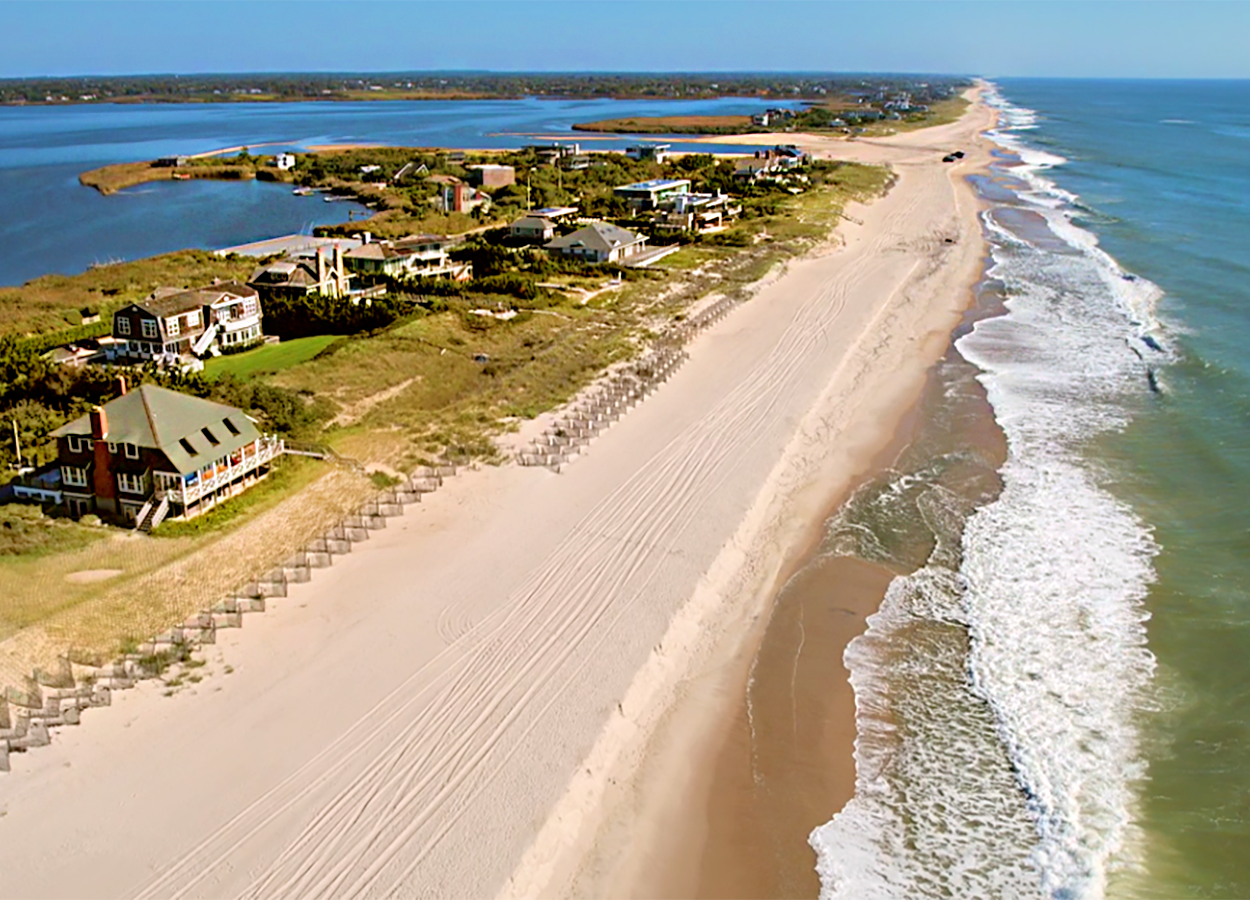We have reprinted the following News Release from ASBPA because it captures the essence of the debate regarding what to do about development at risk along the coast. Whether you support retreat or repair, the answer is far from simple. Economics are likely to favor repair compared with the alternatives over the next century–despite continued sea level rise.
FOR IMMEDIATE RELEASE
Dec. 11, 2012
Retreat is not the answer
Superstorm Sandy prompted a considerable outpouring of paper and ink on what should happen to the shattered shoreline in the wake of this exceptional storm. For some, this was a time to declare that the Jersey Shore et al. will be back better than ever, come hell or (literally) high water. For others, this was a call for prudent reflection on how we interact with an impermanent coastline. And, for a few, it was a good opportunity to dust off the usual coastal canards that we must move back from the water in response to this wreckage… that this was a good opportunity to retreat, not rebuild.
However, in many instances, coastal reality and coastal retreat are simply incompatible. Here’s why:
- People won’t walk away from their properties (or their fond memories of the coast) without a fight. The media was filled with stories of people who had grown up at the beach and then retired to their summer homes. Many wanted to pass on this experience to the children and grandchildren. That makes even the discussion of retreat an issue fraught with emotion and expense… something no government official wants to wade into unless there is an overwhelmingly good reason to do so (and, so far, storm damage does not seem to that reason).
- The economic hit from abandoning the coast would be enormous. First, there’s the coastal economy – the juggernaut of tourist economic dollars, affordable recreation and a way of life would be lost. Entire oceanfront communities would have to be abandoned if retreaters had their way. Then there’s the cost of acquiring all those properties, because if you don’t want people to rebuild, you’d better be ready to buy that land to ensure it doesn’t happen (and don’t forget to pay for all the lawyers). Add in the cost of physically retreating, the removal of structures and infrastructure to return that coast to a more “natural” state. Finally, there’s the need to manage the land that’s left, even at a minimal level… unless your plan is to turn it back to nature and banish people from ever setting foot on it again. In all likelihood managing the new oceanfront would embrace some beach nourishment to ensure any recreational area remains big enough for recreation. All told, the real cost of retreat has never been calculated – and it will be shockingly enormous when someone finally does it.
- There are alternatives – that work! Wide beaches and high dunes can counteract a storm’s waves and surge, and Sandy proved that when you look at the New Jersey-New York coast. (These beaches and dunes can also offer similar protection against sea level change, too.) Better building standards and protection of crucial infrastructure could have forestalled much of the flood damage from Sandy, and should be implemented as part of any rebuilding as a matter of common sense. It might also help to recognize that beaches are meant to erode, and wide restored beaches are supposed to sacrifice their sand the same way a “natural” beach does in a storm. When the sand disappears and the upland structures and infrastructure survives, the restored beach didn’t “fail” – it did exactly what it was supposed to do.
- There are no one-size-fits-all solutions to coastal issues. Retreat is not the answer for every coast, nor is restoration. Too many hard structures are as dangerous as too few, depending on the coastal forces at work in each particular area. The coastline is a dynamic and unique place, and the only prudent way to protect and preserve it (and the people who rely on it) is to treat each situation for the unique condition it is. Anyone who boldly claims that retreat is the only answer clearly has not bothered to seriously consider the question.
- Then there’s what would happen should we embrace coastal retreat? Where is everyone supposed to go where they’ll be out of harm’s way? Is there anywhere where no disaster will occur that would require someone else to pay for their recovery – since that’s the goal those who support retreat always claim? If such an idyllic place actually does exist, how are its current residents going to feel when a few (or more than a few) million displaced coastal residents come into town to stay?
Retreat? Simply put, that’s not what people do. When there’s a problem, they face it – they don’t turn their backs and run away (and that’s what retreat ultimately is). And they don’t abandon others who’ve been hit by natural disaster – they pitch in to help them recover, and hope those folks will do the same for them when the time comes.
Rather than turning our backs on the coast, we need to have the discussion on how to learn from past mistakes and make our coastal structures and infrastructure more robust and resilient. That conversation will pay some real dividends, both for those who love to live on the coast and those who are loathe to pay when disaster strikes.
ABOUT ASBPA: Founded in 1926, the ASBPA promotes the integration of science, policies and actions that maintain, protect and enhance the coasts of America. For more information on ASBPA, go to www.asbpa.org, Facebook or www.twitter.com/asbpa. This information is provided by the American Shore & Beach Preservation Association. For information, to change your email address or to unsubscribe from this list, contact us at exdir@asbpa.org. A complete collection of Beach News Services articles is available for media access online at http://www.asbpa.org/news/newsroom_beachnews.htm.




